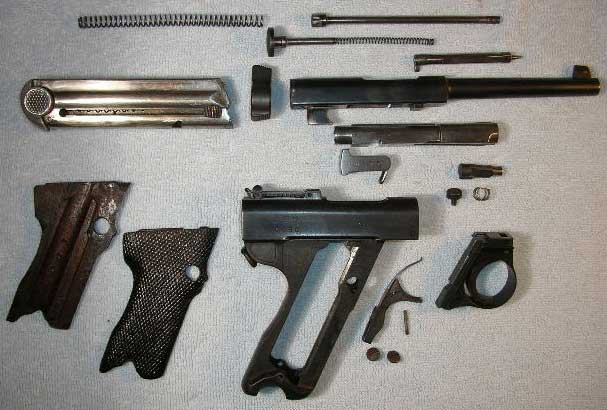Nambu World: Papa Nambu Photos (
I bought this gun from a gentleman
in

The gun is in reasonable shape, but
has a lot of very light pitting that is more visible in the extreme close-ups
below. It also has a few flaws that I will point out along the way.

When I got the gun it had a thick
coat of varnish on the grips. Here is what it looked like—the grips looked
almost like plastic! I used Circa 1850 paint stripper
to remove the varnish. If you undertake something like this, be sure to use a
non-water-based product and test it on an inconspicuous area first.

The markings on the right include
the serial number, 4480 and a row of characters above that say nam-bu-shiki, or “Nambu Type”. The
Japanese didn’t call the gun the Papa; that was a much later designation by
American collectors. Here you can see the fine pitting I was referring to.

The left side has these
two characters, riku-shiki, or “Army
Type”. The Japanese generally referred to these pistols as just “Nambu Type”
or, as these marks suggest, “Army Type”. This is ironic since the Army never
adopted the un officially, but the Navy did.

Here are some of the
inspection marks on the lower front of the grip strap. You can also see one in
the recess for the grip safety (top).

One thing to check whenever buying a
Japanese pistol is the condition of the lanyard loop. Since the Japanese almost
always used lanyards, and they were made of cotton, when they got wet from
sweat or rain they held the moisture against the metal. As a result, even on
guns that are otherwise pretty good the lanyard loop is often severely corroded
like this one.

Here is the gun stripped into its major components.

Click here to go back to the Papa Nambu
Gallery: Nambu World: Papa
Nambu Photo Gallery
Click here to go back to the main page:
Nambu World: Teri’s WWII
Japanese Handgun Website
Last updated: June 1, 2006. All contents are copyright Teri unless otherwise specified and may not
be used elsewhere in any form without prior permission.